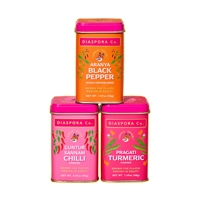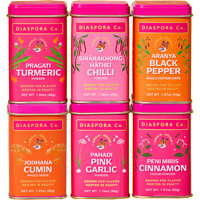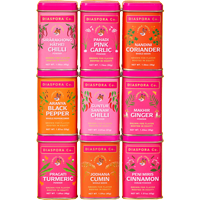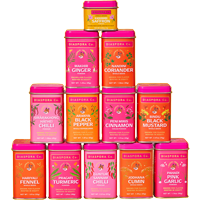I was raised by two grandmothers, both of whom were inveterate chators, a word that doesn’t quite have an equivalent in English. In Hindi, it is a person with a fondness for tongue-tingling food. My grandmothers introduced me to all things forbidden in the handbook of healthful consumption, such as sweets and ice cream. But most significantly, they introduced me to the explosion of flavour that is chaat: at once salty, sweet, umami, spicy, and deliciously sour.
To my mind, chaat — a category of food rather than a single dish, manifesting in myriad forms from town to town across the subcontinent — gets its name from this last taste. Chaat also means to lick something clean, a retroflexive motion of the tongue that imitates our response to something puckeringly sour. It is also the root of the word chutney, that internationally famous little smidge of piquancy that rounds off the flavors of the typical subcontinental meal.
Across the country, sourness makes an entry into meals in various forms: as pickles and chutneys, served on the side; as fermented cultures forming the base of curries, dals and spiced stir-fries; and as souring agents such as limes, squeezed fresh onto piping hot dishes. Many of these were traditionally homemade, with every member of the household putting in their share of work to replenish the stocks of pickles and powders that brightened their meals. These rituals of fermentation, drying, and preserving souring agents have long set the rhythm of culinary calendars; at least, until the widespread adoption of packaged products slowly replaced them.
![]()
There are a number of reasons why sour foods enjoy a pivotal place in the subcontinent. Most sour fruits and vegetables such as lime, tamarind or sour roselle leaves are naturally rich in vitamin C, which is an important nutrient for robust immune systems. This may explain why certain tribal communities in India are dependent on tamarind leaves as a source of nourishment. Besides, Unani — a traditional system of medicine followed in South Asia with roots in Perso-Arabic medicine — and Ayurveda both regard sour foods as cooling for the body. In fact, one of the earliest references to sugarcane vinegar is found in the Sushruta Samhita, a 6th century text on Ayurvedic medicine and surgery.
These rituals of fermentation, drying, and preserving souring agents have long set the rhythm of culinary calendars; at least, until the widespread adoption of packaged products slowly replaced them.
This may explain why sour foods have had a long history, especially among travellers and traders who spent months at sea. Sea-faring communities knew that citruses and sour foods prevented the bleeding of gums, a disease that was later identified as scurvy. Unani medical texts prescribed vinegars to make impotable water suitable for drinking and for quenching thirst. Acids in measured quantities in food and drink balanced the humors of traders across the Arabian Sea who, Elizabeth Lambourn argues in Abraham’s Luggage: A Social Life of Things in the Medieval Indian Ocean World, may have known this not necessarily through medical texts, but through a shared cultural understanding of healing.
![]()
Many Indian souring agents are intimately tied into the seasons. For instance, not too long ago, winters were marked by a frenetic pickling of seasonal produce, and summers were heralded by the arrival of the tender green mangoes that commanded the services of the entire household.
In my experience, the western experience of the mango is associated with its sweetness, aroma and golden color. But in India, Pakistan and Bangladesh, the sour flavor of the unripe green mango is haloed. Sweet mangoes are a summertime delicacy, but sour mangoes, fresh or preserved, are eaten all year long and are pantry staples.
Come summer, droves of children in the subcontinent attack mango orchards that have not yet been engulfed by the advancing maw of urbanization. Many will carry paper pudiyas (in Hindi, a piece of paper folded dexterously to hold small items or powders) with some combination of salt and spice. Others will simply bite straight into the green mangoes, puckering their eyes and mouths at the rush of piquancy and joy brought only by stolen mangoes. Green mangoes, fated to never ripen to gold, arrive in households by the crateful.
Archivist Ranjani Prasad remembers that her home in Hyderabad in the southern Indian state of Telangana would receive a big box of salt and chilies along with the mangoes. “My grandmother would salt and stain them with turmeric, and lay them out for drying on the terrace and the courtyards, under the watch of my cousins and I,” she said. Her grandmother fondly joked that she only ever saw half these mangoes because the children had inhaled the rest. Of the rest, one dried batch would make what they call maavadi orugu or dried mango that makes dals and curries pop with tang throughout the year in her Hyderabad home.
Chef Thomas Zacharias, the former executive chef of Bombay Canteen in Mumbai, describes a similar drying process from neighboring Orissa. Here it is called the ambula, and tastes distinctly different from the dried mango of the north, where it is called khatai — shriveled bits of concentrated tang that are dropped into a dal meant to be slightly sour, or in meat and vegetable preparations that call for both sweetness and sourness. The same khatai is amchoor further north in Punjab and Delhi, often found in its powdered form.
![]()
Besides the mango, there is a multitude of regional produce, each sour on a spectrum that food writing vocabulary has not quite come to encompass. In the parched lands to the north west of the Gangetic plains, a tiny tart cucumber, the kachri, or the melon-like kachra or matira, grows wild in the summer. In photographer Vikas Dalal's home in rural Haryana, they are foraged to make chutneys, added to vegetable dishes, or dried and preserved for use when the season is past. Further north, in the foothills of the Himalayas, food chronicler Rushina Munshaw Ghildiyal tells me that the smaller, more sour cousin of the pomegranate called dadim is crushed into chutneys and dehydrated for a sprinkle of acidity.
The dried seeds of this sour pomegranate are the source of anardana that pairs with amchoor as a dried souring agent in kitchens in the Gangetic belt. In the east, as in my home in Bihar, my grandmother Naima Rahman drops the amra or hog plum whole in a sweet-sour curry with either vegetables or meat. It makes for a delectable, mouth-contortingly sour surprise.
Like mangoes, tamarind commands a powerful nostalgia, fed by pushcarts and bicycle-mounted shops selling the cellophane-wrapped candied fruit outside schools and universities.
Despite its bounty of sour produce, acidity is not a dominant flavor profile in the meals of north India. The sourness here is low-key. When more is sought, it is compensated for by a condiment, or a squeeze of citrus (of which there are several native species, accounting for whom would be wildly beyond the scope of this piece). Instead, in the Gangetic plain and in the desert to its west, that understated brightness often comes from buttermilk or yoghurt. The latter is a shrine unto itself, its bacterial cultures surviving decades and migrating across mountain and desert, with brides who propitiate it each day with a fresh offering of warm milk. When the curd is first set, it must be sweet to eat, but a batch is saved to sour over a night or more, so it can be the base of kadhi (a yoghurt-based gravy thickened with gram flour) or the acid in meat and vegetable preparations. It is why a store-bought yoghurt can never be a satisfying substitute for yoghurt that has been fermented with live cultures, bearing the memories of the warmth of the kitchens that it has traveled through and the fingers that served as thermometers, each batch souring a little differently than another.
In Salma Hussain’s “transcreation” of the Nuskha-i-Shahjahani, as Hussain calls her text, a collection of recipes which historians attribute to the kitchen of the Mughal Emperor Shah Jahan, the recipes almost uniformly call for yoghurt as a souring agent. Lemon, more often than not, is employed in syrups for pulao and curries that are savory-sweet. Sweetness is now the exception rather than the norm in vegetable and meat preparations. Four recipes in this adaptation from the original manuscript stand out, using five different souring agents that none of the other dishes call for: fresh raw mango, kachri, the Indian gooseberry or amla, purple-red falsa berries, and tamarind.
The marble-sized amla is much beloved of Ayurvedic medicine and, come winters, gets crushed into chutneys, preserved as jam or pickle, or even grated into vegetables as a prophylactic against colds that go around in the season.
Falsa berries are harder to come by — they spoil quickly and last only a short season. In Delhi and cities of western Uttar Pradesh and further north in Pakistan, the falsa is a seasonal employer. For two month every summer, vendors with bamboo baskets show up on street corners and pavements selling falsa berries with spiced salt in paper pockets, before disappearing as suddenly as they had come, vanishing into other jobs and lives.
Tamarind, on the other hand, fuels an evergreen industry. Even in regions where climatic conditions do not support tamarind growing, the fruit is abundantly available. Like mangoes, tamarind commands a powerful nostalgia, fed by pushcarts and bicycle-mounted shops selling the cellophane-wrapped candied fruit outside schools and universities. Pockets fill and get sticky from half melted candies that you eat until your mouth is raw and your heart full. My pitiful junior school allowance, two rupees a month, was offered promptly and unhesitatingly to either the imli candy vendor or the stall that sold pani puri, overflowing with spiced tamarind water. That water demands its own tribute in the form of an extra serving, all by itself, to close the ritual of eating pani puri. More than raw mango, which is almost scorchingly acidic, the mellow sourness of tamarind has been the source of all my sneaky street food joys since childhood.
![]()
I sought street food especially for its tang, something that was largely missing in the meals on our table except through condiments. When a souring agent like tamarind was added to something, it was combined with sugar to produce a sweet-sour taste that suppressed the acidity. Sourness is rare in the food of the Indo-Gangetic plain, except in the case of ferments. Bold acid tones are considered a lack of culinary finesse, and a frequent slur for the south of the country is “khatta” — a reference to the stereotype that all food from the region is sour. While this is an exaggeration, it is true that the cuisine of peninsular and southern India embraces acidity with exquisite grace.
To be chator is to ruffle preened feathers, to enjoy the forbidden, and simultaneously experience the sour, sharp, tangy, tart, piquant, and bright flavours of life.
Many regions in the south of India move beyond the tepid notes of the curds and the lemon to bolder assertions of tamarind, whose name, puli, in both Malayalam and Tamil (along with the slight variation huli in Kannada) simply means sour/acidic. Easy to dry, package and send over long distances, the tamarind is a favorite souring agent, even in Kashmir, where tamarind trees are foreign. In stir fries and curries, fish or meat, rice or dal, tamarind is a pop of tartness that makes a dish sing. It is, however, only one of several layers of acid that the region plays with.
Vinegars have an ancient presence in India, according to the food scholar K.T. Achaya, but colonial settlers made vinegars a prominent part of the local cuisine, using indigenous produce such as jamun (or java plums), cane and coconut in Goa and the surrounding coastal region. However, it is the unassuming white vinegar that one is most likely to find all over the country, the true hero in the many regional iterations of Indo-Chinese food. The same vinegary sharpness also preserves pickles naturally.
In many Mappila Muslim homes in northern Kerala, tamarind goes in curries with roasted coconut. The darker curries get a punch of kodampuli, or the dried, often smoked rind of the Garcinia gummi-gata fruit. In Coorg, in neighboring Karnataka, it is the decoction of the same fruit, enchantingly deep in color, that is used for flavoring curries. According to food blogger Sitara Cariappa, it was also used in sherbets at one point. Further north, along the Konkan region of the western coast, the dried rind and decoction of another Garcinia species related to the persimmon – Garcinia indica, locally known as kokum – lends its fruity sourness and deep red color to fish curries and sherbets, and to the rosy, spiced drink laced with coconut milk called sol kadhi, that accompanies meals. In the northeastern state of Assam, food blogger Rumi Mahanta Dutta lists at least three other Garcinia species that are clubbed under the category ‘thekera’, whose dried rinds melts away into the curry, leaving no textural trace.
Unlike the Garcinia, where the sourness of the fruit is isolated in the dried rind or a decoction, many fruits simply go whole or in bite-sized pieces into curries, sometimes balanced by the addition of a sweetener such as jaggery. The bilimbi, also known as irumban puli; the carambola or star fruit commonly known as amrak in Hindi; and hog plums, which can be stingingly sour on their own, tone down to the just the right amount of acid when dropped into a curry. Then there are fruits such as the elephant apple or the jujubes, both sour and sweet at once, elevating the complexity of any dish they are added to.
Those who appreciate sourness as a spectrum will turn not only to showstopper sour fruits but also to leaves such as the edible varieties of sorrels, purslanes, roselles, and tamarind (also an important source of vitamin C for many pastoral and indigenous communities). Certain varieties of knotweed are used to sour soups in Nagaland, on the north-eastern border of India. In the home of chef Maia Lamphung, in neighbouring Manipur, the leaves of the Deccan hemp imparts an “earthy, sour flavor” to stews and broths. But sourness isn’t a prominent note in the north east either. There is the slight acidity and deep umami of a range of ferments from akhuni (fermented soybean) to anishi (dried fermented leaves), but vivid sourness is rare.
The “sour divide” between the North and South has flummoxed many. North India certainly has a complicated relationship with sourness. Little underscores it as well as that word, chator, appellated to my grandmothers. An undercurrent of derision runs through the word, subtly snubbing any woman who enjoys spicy-tangy food. At the same time, it holds within itself the implication of an insouciant defiance of the etiquettes of fine eating, a dispensation of pretension in favour of the sincere and passionate joy of food. To be chator is to ruffle preened feathers, to enjoy the forbidden, and simultaneously experience the sour, sharp, tangy, tart, piquant, and bright flavours of life.
![]()
A number of people contributed to this article. Besides those already cited by name, special thanks to Sheetal Bhatt, who documents the food of Gujarat on her page www.theroute2roots.com/; to Krutika Behrawala, co-editor of medium.com/but-first-food; sociology scholar Ayesha Mualla; documentary filmmaker Krupa Raghunathan, and Aysha Tanya, co-founder and co-editor of Goya Journal.











